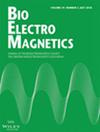求助PDF
{"title":"血管组织中生物源性和非生物源性磁性纳米颗粒的链状结构","authors":"Svitlana Gorobets, Oksana Gorobets, Yuri Gorobets, Maryna Bulaievska","doi":"10.1002/bem.22390","DOIUrl":null,"url":null,"abstract":"<div>\n <section>\n <p>In this paper, slices of organs from various organisms (animals, plants, fungi) were investigated by using atomic force microscopy and magnetic force microscopy to identify common features of localization of both biogenic and nonbiogenic magnetic nanoparticles. It was revealed that both biogenic and nonbiogenic magnetic nanoparticles are localized in the form of chains of separate nanoparticles or chains of conglomerates of nanoparticles in the walls of the capillaries of animals and the walls of the conducting tissue of plants and fungi. Both biogenic and nonbiogenic magnetic nanoparticles are embedded as a part of the transport system in multicellular organisms. In connection with this, a new idea of the function of biogenic magnetic nanoparticles is discussed, that the chains of biogenic magnetic nanoparticles and chains of conglomerates of biogenic magnetic nanoparticles represent ferrimagnetic organelles of a specific purpose. Besides, magnetic dipole–dipole interaction of biogenic magnetic nanoparticles with magnetically labeled drugs or contrast agents for magnetic resonance imaging should be considered when designing the drug delivery and other medical systems because biogenic magnetic nanoparticles in capillary walls will serve as the trapping centers for the artificial magnetic nanoparticles. The aggregates of both artificial and biogenic magnetic nanoparticles can be formed, contributing to the risk of vascular occlusion. Bioelectromagnetics. 43:119–143, 2022. © 2021 Bioelectromagnetics Society.</p>\n </section>\n </div>","PeriodicalId":8956,"journal":{"name":"Bioelectromagnetics","volume":"43 2","pages":"119-143"},"PeriodicalIF":1.2000,"publicationDate":"2022-01-25","publicationTypes":"Journal Article","fieldsOfStudy":null,"isOpenAccess":false,"openAccessPdf":"","citationCount":"6","resultStr":"{\"title\":\"Chain-Like Structures of Biogenic and Nonbiogenic Magnetic Nanoparticles in Vascular Tissues\",\"authors\":\"Svitlana Gorobets, Oksana Gorobets, Yuri Gorobets, Maryna Bulaievska\",\"doi\":\"10.1002/bem.22390\",\"DOIUrl\":null,\"url\":null,\"abstract\":\"<div>\\n <section>\\n <p>In this paper, slices of organs from various organisms (animals, plants, fungi) were investigated by using atomic force microscopy and magnetic force microscopy to identify common features of localization of both biogenic and nonbiogenic magnetic nanoparticles. It was revealed that both biogenic and nonbiogenic magnetic nanoparticles are localized in the form of chains of separate nanoparticles or chains of conglomerates of nanoparticles in the walls of the capillaries of animals and the walls of the conducting tissue of plants and fungi. Both biogenic and nonbiogenic magnetic nanoparticles are embedded as a part of the transport system in multicellular organisms. In connection with this, a new idea of the function of biogenic magnetic nanoparticles is discussed, that the chains of biogenic magnetic nanoparticles and chains of conglomerates of biogenic magnetic nanoparticles represent ferrimagnetic organelles of a specific purpose. Besides, magnetic dipole–dipole interaction of biogenic magnetic nanoparticles with magnetically labeled drugs or contrast agents for magnetic resonance imaging should be considered when designing the drug delivery and other medical systems because biogenic magnetic nanoparticles in capillary walls will serve as the trapping centers for the artificial magnetic nanoparticles. The aggregates of both artificial and biogenic magnetic nanoparticles can be formed, contributing to the risk of vascular occlusion. Bioelectromagnetics. 43:119–143, 2022. © 2021 Bioelectromagnetics Society.</p>\\n </section>\\n </div>\",\"PeriodicalId\":8956,\"journal\":{\"name\":\"Bioelectromagnetics\",\"volume\":\"43 2\",\"pages\":\"119-143\"},\"PeriodicalIF\":1.2000,\"publicationDate\":\"2022-01-25\",\"publicationTypes\":\"Journal Article\",\"fieldsOfStudy\":null,\"isOpenAccess\":false,\"openAccessPdf\":\"\",\"citationCount\":\"6\",\"resultStr\":null,\"platform\":\"Semanticscholar\",\"paperid\":null,\"PeriodicalName\":\"Bioelectromagnetics\",\"FirstCategoryId\":\"99\",\"ListUrlMain\":\"https://onlinelibrary.wiley.com/doi/10.1002/bem.22390\",\"RegionNum\":3,\"RegionCategory\":\"生物学\",\"ArticlePicture\":[],\"TitleCN\":null,\"AbstractTextCN\":null,\"PMCID\":null,\"EPubDate\":\"\",\"PubModel\":\"\",\"JCR\":\"Q3\",\"JCRName\":\"BIOLOGY\",\"Score\":null,\"Total\":0}","platform":"Semanticscholar","paperid":null,"PeriodicalName":"Bioelectromagnetics","FirstCategoryId":"99","ListUrlMain":"https://onlinelibrary.wiley.com/doi/10.1002/bem.22390","RegionNum":3,"RegionCategory":"生物学","ArticlePicture":[],"TitleCN":null,"AbstractTextCN":null,"PMCID":null,"EPubDate":"","PubModel":"","JCR":"Q3","JCRName":"BIOLOGY","Score":null,"Total":0}
引用次数: 6
引用
批量引用

 求助内容:
求助内容: 应助结果提醒方式:
应助结果提醒方式:


